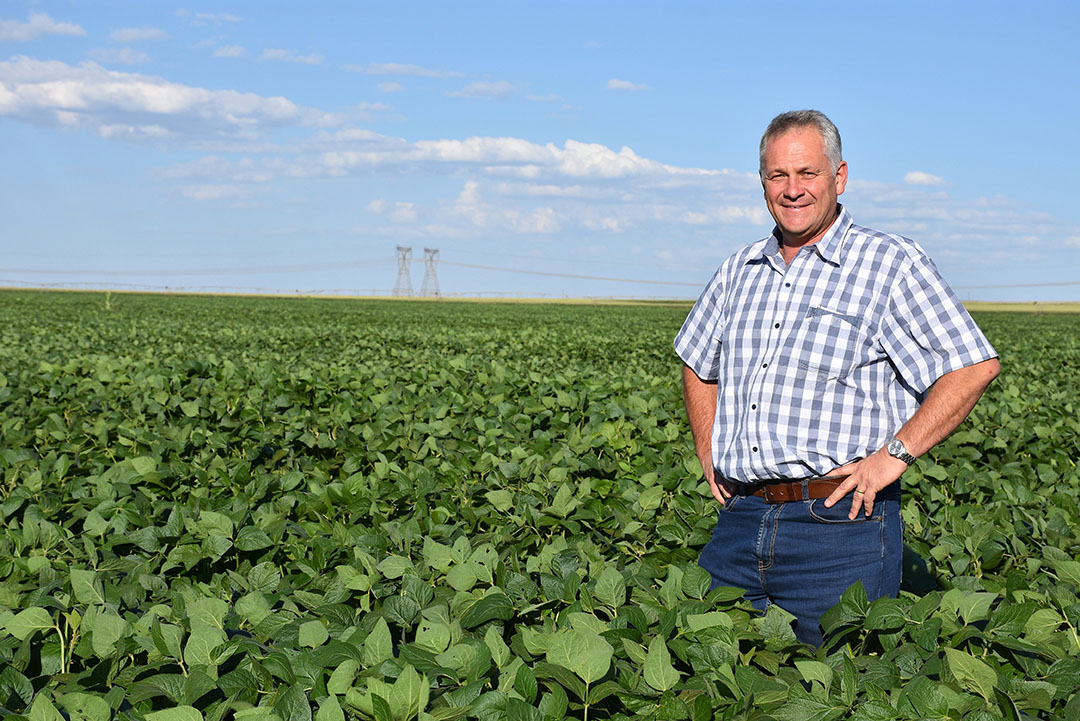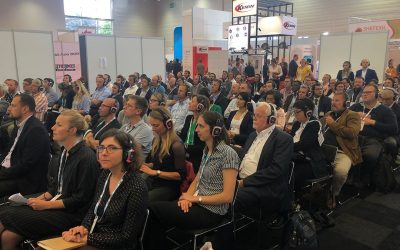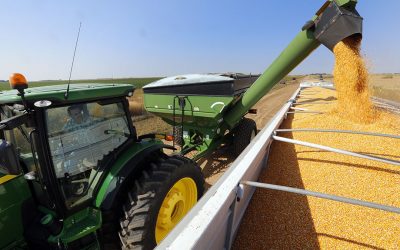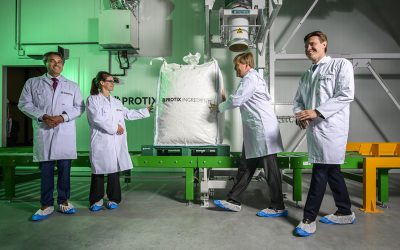South African grain farmer does it all

Even with pending uncertainties lying ahead for South African farmers, the majority of them are still ploughing away making plans for the future.
That sentiment also applies to Sarel Haasbroek who not only operates an arable farm but also a grain storage unit, a tillage machinery dealership and on top of that a pig and beef farm. Sarel’s philosophy is that it’s best not to have ‘all your eggs in the one basket’ and that is why he has a number of sectors in his business model, and has plans for more to be added.
More time in the office than in fields
Based in the Carletonville area of Gauteng, Sarel’s grain farm extends to 650 hectares of irrigated land and a further 2,500 hectares of dry land mostly growing maize, winter wheat, sugar beet, white kidney peas, soybeans and potatoes for chips. Even with such a hectic schedule there is still room to increase the farming activities at Sarel’s farm. “We also run cattle producing weaners for the feedlots,” says Sarel. “And I have plans to introduce 2,000 sows to the farm as I have a lot of experience in that sector as well. I am also the CEO of Terratill which is the official importer of new Horsch tillage equipment from Germany into South Africa and I am an executive member of Grain SA,” he says. As you can imagine with all these enterprises running Sarel is quite a busy man particularly so on the grain farm. It is here that Sarel spends most of his time in the office and out in the fields.
The use of precision farming techniques
Grain yields on the irrigated land can reach 12 to 15 tonnes per hectare and on the dry land a somewhat lower yield of six tonnes can be achieved. A running five year average hovers around five tonnes per hectare.
“We aim to sell most of our grain on the spot markets,” he says.” However, we do operate a grain storage facility for both ourselves and outside farmers who rent the space. With this we can hold grain until prices improve. There is a total capacity to store 27,000 tonnes of grain there altogether.” Precision farming is taking off in South Africa making Sarel’s range of Horsch machinery always in big demand. “We are the importers and distributors of the Horsch machinery range throughout South Africa,” states Sarel. “On our own farm we use yield mapping to ensure the land gets exactly whatever it needs, wherever it needs it. There is indeed a higher accuracy with GPS and precision farming machinery is in big demand here. Horsch is a well-known and reputable brand here in South Africa and our customers are mainly farmers. There are not so many contractors in this region to buy machinery,” he says.

Problem of drought and hailstones
When considering the biggest challenges to growing grain in South Africa, Sarel admits the weather is top of the list. The availability of water is always a concern for farmers in South Africa and it is something that Sarel keeps a close eye on as he is using 84 pivots. “Drought is our biggest fear,” he adds. “We have had three difficult years of bad drought and that affects the growing season a lot. Also hailstones are a huge problem in this region. We can insure against it but that doesn’t save the crop. This year we have had to replant some areas that were affected by the weather and then that puts the new crop behind the rest,” he said.
Grain prices fluctuate in South Africa quite frequently hence why Sarel operates the storage facility as well. Planting would normally start at the end of September and finish early November. Harvesting would subsequently start at the end of April and run through to the end of August. “Wheat would normally sell for an average price of R4,500 (£235, US$ 311) per tonne and beans up to R14,000 (£731, US$ 968) per tonne, but the markets are very volatile,” he states.
Roundup is a vital tool
Using pre-emergent sprays is also an important part of Sarel’s crop growing programme and while all the controversy about using Roundup rattles on in Europe, Sarel says it is very much needed. “Roundup is a vital tool for us growing grain,” he says. “We use it plus other chemicals from Syngenta as well. “In South Africa we have used GM crops for the past 15 years. Lodging (the bending over of the stems near ground level of grain crops, which makes them very difficult to harvest), is not a problem here as such. Using GM crops makes the cereals easier to manage from a pesticides side and in terms of insect control. I think they are very beneficial to smaller farmers with their resistance to disease, insects and indeed drought,” he adds. “It is a real advantage when the crops are resistant to glyphosate because when we spray it on, everything we do not want in the crop is killed off,” he concludes.











